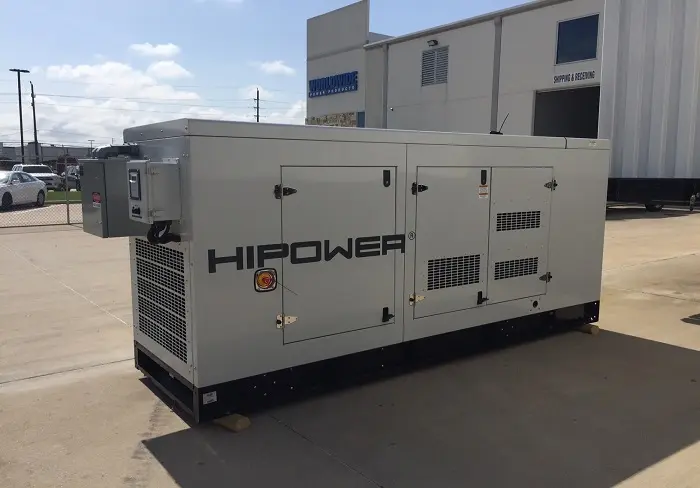A 5000-watt generator is a popular choice for homeowners looking for backup power during outages or for use in various outdoor activities. Understanding whether this generator size can effectively run a house is crucial for anyone considering its purchase. This article will explore the capabilities of a 5000-watt generator, what appliances it can support, and factors to consider for optimal usage.
Power outages can disrupt daily life, making backup generators an essential investment for homeowners. A 5000-watt generator offers a blend of portability and power, making it suitable for various applications, from emergency home backup to recreational use. Knowing if a 5000-watt generator can run your house involves understanding your power needs and the generator’s capabilities.
Understanding Generator Power Ratings
Watts: The Basic Unit of Measurement
The wattage rating of a generator indicates how much electrical power it can provide. This rating typically includes:
Running Watts: The continuous power the generator can supply.
Starting Watts: The additional power needed to start appliances that require more energy initially.
Importance of Knowing Your Needs
To determine if a 5000-watt generator can run your house, you need to calculate the wattage requirements of the appliances and systems you want to power.
What Appliances Can a 5000 Watt Generator Run?
Essential Home Appliances
Refrigerator:
Average running wattage: 200-800 watts
Starting wattage: 800-1200 watts
A 5000-watt generator can easily support a refrigerator, keeping food safe during outages.
Lights:
Average running wattage: 60-100 watts per bulb
Depending on how many bulbs you have, a 5000-watt generator can power multiple lights throughout your home.
Sump Pump:
Average running wattage: 500-800 watts
Ideal for preventing basement flooding, a sump pump can run effectively on this generator.
Television:
Average running wattage: 100-400 watts
You can power a television, allowing you to stay informed and entertained during outages.
Microwave Oven:
Average running wattage: 600-1200 watts
A microwave may require starting wattage, so it’s essential to check your specific model.
Heating and Cooling Devices
Space Heaters:
Average running wattage: 750-1500 watts
You can run a small to medium-sized space heater comfortably.
Air Conditioner:
Average running wattage: 2000-4000 watts (varies by unit)
A 5000-watt generator can run smaller window units, but larger central systems may exceed capacity.
Tools and Equipment
Power Tools:
Average running wattage: 500-1500 watts (varies by tool)
Ideal for job sites, you can use several tools simultaneously without issues.
Lawn Equipment:
Average running wattage: 400-1200 watts
You can power lawnmowers, trimmers, and blowers for outdoor maintenance.
Other Devices
Laptop and Phone Chargers:
Average running wattage: 50-100 watts per device
You can charge multiple devices without overloading the generator.
Battery Chargers:
Average running wattage: 100-200 watts
Great for charging batteries for tools and other equipment.
Calculating Your Power Needs
How to Determine Wattage
To effectively use your 5000-watt generator, follow these steps:
List the Appliances: Make a list of all appliances you plan to run.
Check Wattage Ratings: Find the running and starting wattage for each appliance (usually found on a label or in the user manual).
Calculate Total Wattage: Add the running wattage of all appliances. If using items that require more power to start, factor in their starting wattage.
Example Calculation
Suppose you want to run the following appliances:
Refrigerator: 800 watts (starting: 1200 watts)
Lights (4 bulbs): 400 watts
Microwave: 1000 watts (starting: 1200 watts)
Television: 300 watts
Total Running Wattage: 800 + 400 + 1000 + 300 = 2500 watts
Total Starting Wattage: 1200 + 1200 = 2400 watts
In this scenario, a 5000-watt generator would be more than sufficient, as the total running wattage is 2500 watts, and the starting wattage does not exceed 5000 watts.
What a 5000 Watt Generator Cannot Run
While a 5000-watt generator can handle many household appliances, there are limitations:
Large Air Conditioners:
Central AC units typically exceed the generator’s capacity, especially during startup.
Electric Water Heaters:
These can require significant wattage, often beyond 5000 watts.
Washing Machines:
Depending on the model, washing machines can have high starting wattage.
Electric Ovens:
These appliances usually require more power than a 5000-watt generator can supply.
Tips for Efficient Generator Use
Prioritize Essential Appliances
In emergencies, prioritize essential appliances such as refrigerators and medical devices. Create a list and allocate wattage accordingly.
Avoid Overloading
Avoid running too many high-wattage appliances simultaneously. This can damage the generator and cause outages.
Use Power Strips Wisely
If using power strips, ensure they are rated for the total wattage of all devices connected.
Regular Maintenance
Perform regular maintenance on your generator to keep it in good working condition. This includes checking oil levels, replacing filters, and running the generator periodically.
Safety Considerations
Carbon Monoxide Safety
Always use your generator outdoors in a well-ventilated area. Generators produce carbon monoxide, a deadly gas that can accumulate indoors.
Proper Fuel Storage
Store fuel in approved containers in a safe location away from the generator. Ensure that the generator is turned off and cooled down before refueling.
Electrical Safety
Use heavy-duty extension cords rated for outdoor use. Avoid using indoor cords, as they may overheat.
Conclusion
A 5000-watt generator is a reliable power source that can handle many household appliances, making it suitable for home use during outages. By understanding the wattage requirements of your devices and practicing safe generator use, you can effectively maximize the benefits of your generator. Whether for emergency backup or recreational electricity, knowing if a 5000-watt generator can run your house will empower you to make informed decisions.
Related topics:

